Copyright 2002 by Princeton Univesity Press
Published by Princeton University Press, 41 William Street,
Princeton, New Jersey 08540
In the United Kingdom: Princeton University Press, 3 Market Place,
Woodstock, Oxfordshire OX20 1SY
All Rights Reserved
Library of Congress Cataloging-in-Publication Data
Walter, Barbara F.
Committing to peace : the successful settlement of civil wars / Barbara F. Walter.
p. cm.
Includes bibliographical references and index.
ISBN 0-691-08930-2 (cl : acid-free paper) ISBN 0-691-08931-0 (pb : acid-free paper) 1. Civil war. 2. Low-intensity conflicts (Military science) 3. World politics20th century. I. Title.
U240 .W35 2002
303.64dc21 2001036379
British Library Cataloging-in-Publication Data is available
www.pup.princeton.edu
ISBN-13: 978-0-691-08931-7 (pbk.)
ISBN: 978-1-400-82446-5 (e-book)
R0
ACKNOWLEDGMENTS

I HAVE BEEN the beneficiary of much support and assistance throughout the writing of this book. David Laitin read every version of this work, from its distant beginning as a graduate school paper to the final book manuscript. He offered invaluable guidance throughout the process and made the whole experience more enjoyable as a result. No one could ask for a better mentor. James Fearon and Stephen Walt were equally important in my training as a scholar. Both read numerous versions of the manuscript and were always generous with their time and advice. I owe a great deal of thanks to each of them.
I was also extremely fortunate to go through graduate school with a cohort of friends much smarter than I. Stacey Bergstrom, Dale Copeland, Hein Goemans, Andrew Grant-Thomas, Atsushi Ishida, Stathis Kalyvas, Barbara Koremenos, Andy Kydd, Alicia Levine, Walter Mattli, Stu Romm, Ivan Arreguin Toft, Monica Duffy Toft, and Yael Wolinsky discussed various parts of this manuscript with me and helped formulate many of its important ideas. I will always look back at those years as a particularly stimulating time in my life.
Sammy Barkin, Rachel Bronson, Allan Castle, Bruce Cronin, Charles Glaser, Roy Licklider, Dan Lindley, John Matthews, Dan Philpott, Ken Pollack, Dani Reiter, Beth Rodgers, Don Rothchild, and Duncan Snidal offered helpful comments on all or parts of the manuscript and helped clarify my arguments. Neal Beck, Curt Signorino, Mike Tomz, and Richard Tucker answered numerous questions about research design and improved the empirical analysis in valuable ways. Paul Papayoanou walked me through the game theory and showed unending patience in answering simple questions. Page Fortna sent me a copy of her exceptional dissertation, which served as my model of how social science should be conducted. Bob Jervis and Jack Snyder will always hold a special place in my heart for taking me under their wings and serving as role models during my transition from graduate student to full-fledged academic.
The University of California at San Diego has provided the most nurturing of homes. For lunches and dinners and hallway conversations I thank Liz Gerber, Peter Gourevitch, Steph Haggard, Michael Hiscox, Miles Kahler, David Lake, Skip Lupia, Andrew McIntyre, John McMillan, Barry Naughton, Susan Shirk, Matt Shugart, and Chris Woodruff. I have grown much as a scholar from my interactions with each of them. Thanks also to Risa Brooks and Stephanie McWhorter, my excellent research assistants, and to Matt Baum who taught me more than I ever taught him. It was my good fortune to work with each of them while they were graduate students at UCSD.
This book has also benefited from the generous financial support of numerous institutions. I am most grateful to The Smith Richardson Foundation for their Junior Faculty Grant Program, which supported this work during a critical stage in its writing. The Harry Frank Guggenheim Foundation and the Andrew Mellon Foundation helped fund this project in its early years. The Olin Institute for Strategic Studies at Harvard University, the War and Peace Institute at Columbia University, the Institute on Global Conflict and Cooperation at the University of California, and UCSDs Academic Senate also helped fund the project at various stages and provided wonderful places to work.
My family, Lynn, Rudolf, Christine, Joe, Marc, Elke, Vivian, Zoltan, and Catherine have provided many hours of fun away from the book and have helped bring balance and contentment to my life. My biggest debt, however, is to my husband, Zoltan Hajnal. Zoli read every word of every chapter and never let me doubt myself or the project. His careful hand and intelligence are present throughout the book. He is my intellectual partner, my soul mate, my most fun playmate, and the source of an extraordinarily happy marriage. Those who know him understand how supremely blessed I am to pass through life with this man. I dedicate this book to him.
Introduction

WHY DO SOME CIVIL WARS end peacefully, while others are fought to the finish? Why, for example, did the Sandinistas and Contras in Nicaragua stop their war with a negotiated settlement, while the Sandinistas and the Somoza regime did not? Why were the Sudanese able to end their conflict in 1972 in a settlement, but not the Nigerians? Why did negotiations in Bosnia bring peace, while negotiations in Rwanda brought genocide?
Between 1940 and 1992, only a third of all negotiations to end civil wars resulted in a successfully implemented peace settlement. In most cases, combatants chose to walk away from the negotiating table and return to war. In fact, civil war combatants almost always chose to return to war unless a third party stepped in to enforce or verify a post-treaty transition. If a third party assisted with implementation, negotiations almost always succeeded, regardless of the initial goals, ideology, or ethnicity of the participants. If a third party did not, these talks almost always failed.
This book tries to explain why combatants in some civil war negotiations choose to sign and implement peace settlements, while others choose to return to war. I argue that successful negotiations must do more than resolve the underlying issues over which a civil war has been fought. To end their war in a negotiated settlement, the combatants must clear the much higher hurdle of designing credible guarantees on the terms of the agreementa task made difficult without outside assistance. The biggest challenge facing civil war opponents at the negotiating table, therefore, is not how to resolve disagreements over land reform, majority rule, or any of the underlying grievances that started the war. These are difficult issues, but they are not the most difficult. The greatest challenge is to design a treaty that convinces the combatants to shed their partisan armies and surrender conquered territory even though such steps will increase their vulnerability and limit their ability to enforce the treatys other terms. When groups obtain third-party security guarantees for the treacherous demobilization period that follows the signing of an agreement, and obtain power-sharing guarantees in the first postwar government, they will implement their settlement. When groups fail to obtain such guarantees, the warring factions will eventually reject a negotiated settlement and continue their war.

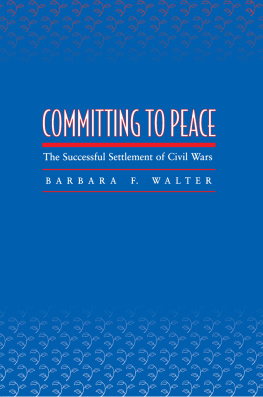
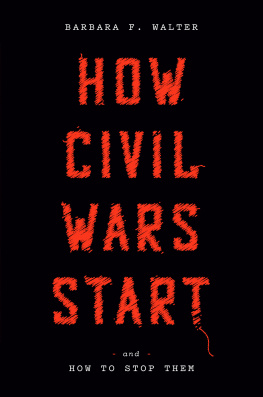
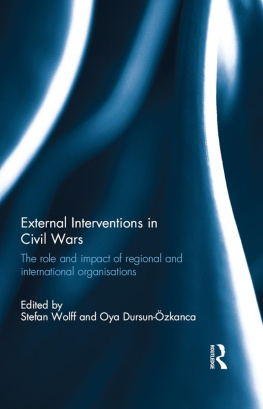
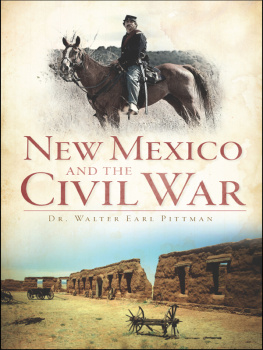
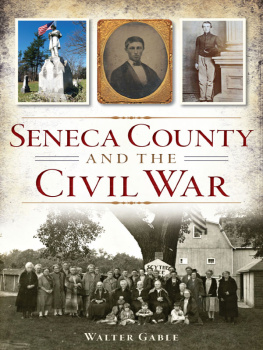

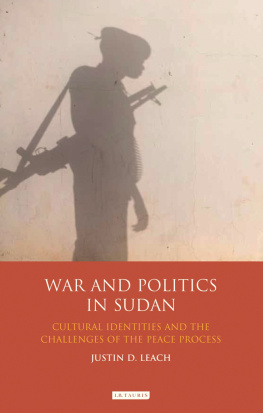
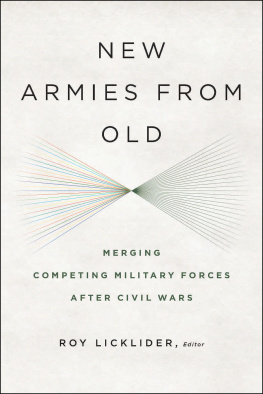
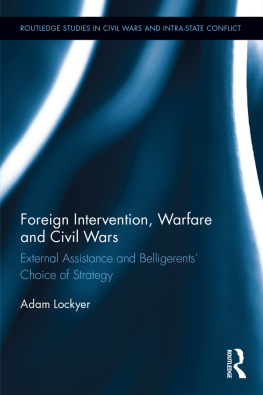


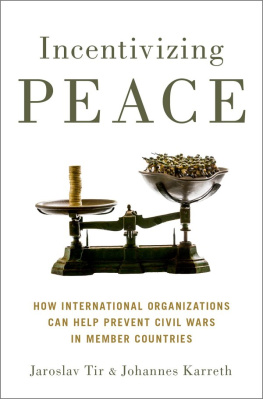


 I HAVE BEEN the beneficiary of much support and assistance throughout the writing of this book. David Laitin read every version of this work, from its distant beginning as a graduate school paper to the final book manuscript. He offered invaluable guidance throughout the process and made the whole experience more enjoyable as a result. No one could ask for a better mentor. James Fearon and Stephen Walt were equally important in my training as a scholar. Both read numerous versions of the manuscript and were always generous with their time and advice. I owe a great deal of thanks to each of them.
I HAVE BEEN the beneficiary of much support and assistance throughout the writing of this book. David Laitin read every version of this work, from its distant beginning as a graduate school paper to the final book manuscript. He offered invaluable guidance throughout the process and made the whole experience more enjoyable as a result. No one could ask for a better mentor. James Fearon and Stephen Walt were equally important in my training as a scholar. Both read numerous versions of the manuscript and were always generous with their time and advice. I owe a great deal of thanks to each of them.
 WHY DO SOME CIVIL WARS end peacefully, while others are fought to the finish? Why, for example, did the Sandinistas and Contras in Nicaragua stop their war with a negotiated settlement, while the Sandinistas and the Somoza regime did not? Why were the Sudanese able to end their conflict in 1972 in a settlement, but not the Nigerians? Why did negotiations in Bosnia bring peace, while negotiations in Rwanda brought genocide?
WHY DO SOME CIVIL WARS end peacefully, while others are fought to the finish? Why, for example, did the Sandinistas and Contras in Nicaragua stop their war with a negotiated settlement, while the Sandinistas and the Somoza regime did not? Why were the Sudanese able to end their conflict in 1972 in a settlement, but not the Nigerians? Why did negotiations in Bosnia bring peace, while negotiations in Rwanda brought genocide?